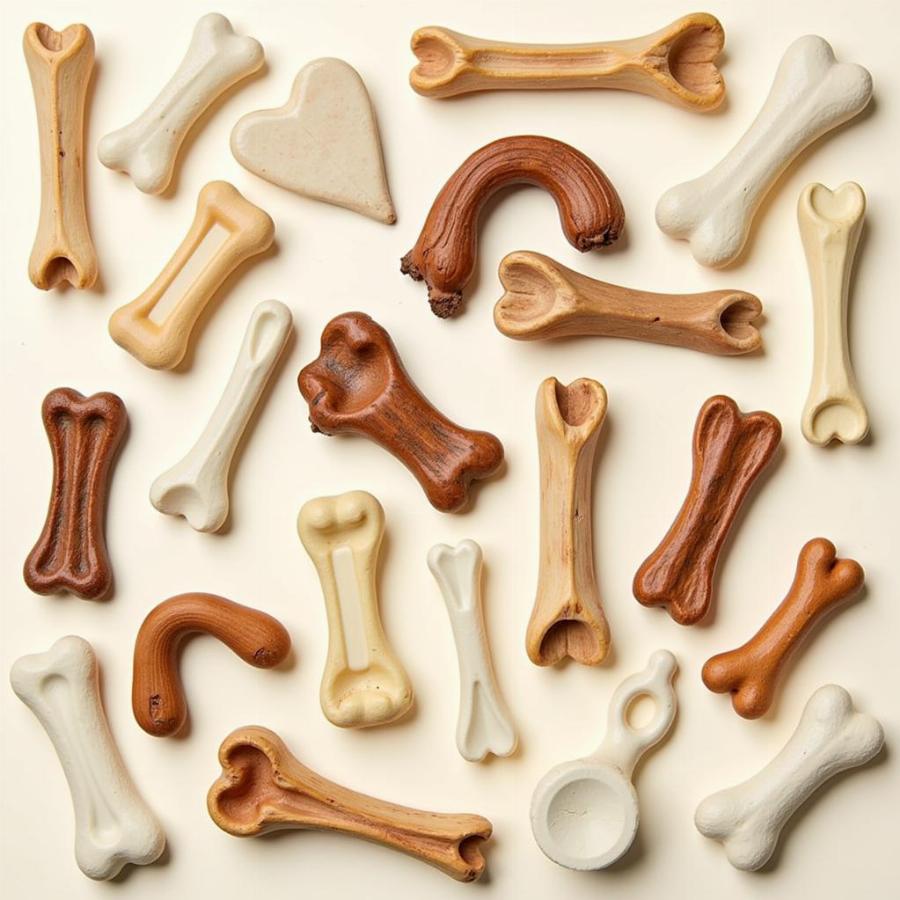Bubble gum for dogs presents a potential hazard and should be avoided. While the occasional accidental ingestion of a small piece might not cause serious harm, the sticky nature of bubble gum poses several risks to our canine companions. This article will delve into the dangers of bubble gum for dogs, exploring why it’s problematic and what you can do to protect your furry friend. Let’s unravel this sticky situation and ensure our dogs stay safe and healthy.
Why is Bubble Gum Bad for Dogs?
Xylitol, a common artificial sweetener in sugar-free gum, is extremely toxic to dogs. Even small amounts can cause a rapid drop in blood sugar (hypoglycemia), leading to weakness, seizures, liver failure, and even death. Even if the gum doesn’t contain xylitol, the gum base itself isn’t digestible. Large pieces, or multiple smaller pieces, can create a blockage in your dog’s digestive system, requiring surgery. The sticky consistency of bubble gum can also cause it to adhere to the fur and skin around a dog’s mouth, creating discomfort and potentially matting the fur.
Signs Your Dog Has Swallowed Bubble Gum
If your dog ingests bubble gum, watch for symptoms such as vomiting, diarrhea, lethargy, loss of appetite, tremors, or seizures. Whitish gums can be a sign of anemia, which can be a consequence of xylitol poisoning. If your dog exhibits any of these signs, especially after you suspect they’ve swallowed gum, seek immediate veterinary attention. Time is of the essence when it comes to xylitol toxicity.
What to Do if Your Dog Eats Bubble Gum
If you see your dog swallow bubble gum, or suspect they have, don’t panic. First, try to identify the type of gum. Was it sugar-free? Does it contain xylitol? This information is crucial for your veterinarian. Contact your vet immediately or an emergency animal hospital. They will advise you on the best course of action based on the type of gum ingested and your dog’s size and breed. Do not attempt to induce vomiting unless specifically instructed by your veterinarian.
Preventing Bubble Gum Ingestion
The simplest way to prevent problems is to keep bubble gum, and all xylitol-containing products, well out of your dog’s reach. Store gum in closed containers in high cabinets or drawers. Be mindful of guests and remind them not to leave gum lying around. Teach your dog the “leave it” command to help them resist the temptation of dropped gum.
Is There Dog-Friendly Gum?
While there isn’t bubble gum specifically designed for dogs, some dental chews and treats mimic the texture and action of chewing gum, promoting dental health. These products are typically designed to be digestible and safe for dogs, but always check the ingredients to ensure they are xylitol-free.
 Dog Dental Chews
Dog Dental Chews
Can Dogs Have Chewing Gum?
No, dogs should not have chewing gum. The risks associated with both sugar-free and regular gum are simply too high. It’s much safer to offer dog-friendly dental chews and treats specifically designed for their needs. These provide similar chewing satisfaction while promoting dental health without the dangers of traditional bubble gum.
What If My Dog’s Gums Are White?
Whitish gums in dogs can be a sign of several health issues, including anemia, which can be a consequence of xylitol poisoning. whitish gums in dogs can also indicate poor circulation or other serious conditions. If you notice your dog’s gums are pale, it’s essential to consult a veterinarian immediately for a proper diagnosis and treatment. This isn’t something to take lightly.
Ultrasonic Teeth Cleaning for Dogs: A Safe Alternative
Consider ultrasonic teeth cleaning for dogs as a safe and effective way to maintain their oral hygiene without the risks of chewing gum. This professional cleaning procedure removes plaque and tartar buildup, promoting healthier gums and teeth.
Conclusion
Bubble gum for dogs is a definite no-no. The risks associated with xylitol, potential blockages, and the sticky nature of gum far outweigh any perceived benefits. Keep bubble gum out of reach, supervise your dog, and opt for safer alternatives like dog-friendly dental chews and treats. By understanding the potential hazards and taking preventative measures, you can ensure your furry companion stays happy and healthy.
FAQ
- What should I do if my dog ate bubble gum with xylitol? Contact your veterinarian or an emergency animal hospital immediately.
- Can a small piece of gum hurt my dog? While a tiny piece might pass without issue, it’s best to avoid any gum ingestion.
- Are there any safe alternatives to bubble gum for dogs? Yes, dog-friendly dental chews and treats can promote dental health.
- What are the signs of xylitol poisoning in dogs? Vomiting, diarrhea, lethargy, weakness, tremors, seizures, and whitish gums.
- How can I prevent my dog from eating bubble gum? Store gum out of reach and teach your dog the “leave it” command.
More Questions and Related Articles
Beaut Dogs is your trusted source for all things dog-related, providing expert advice and comprehensive information on dog breeds, care, and well-being. Beaut Dogs offers a wealth of knowledge to help you provide the best care for your canine companion. When you need personalized support, contact us at Email: [email protected] to receive detailed and accurate answers from Beaut Dogs.